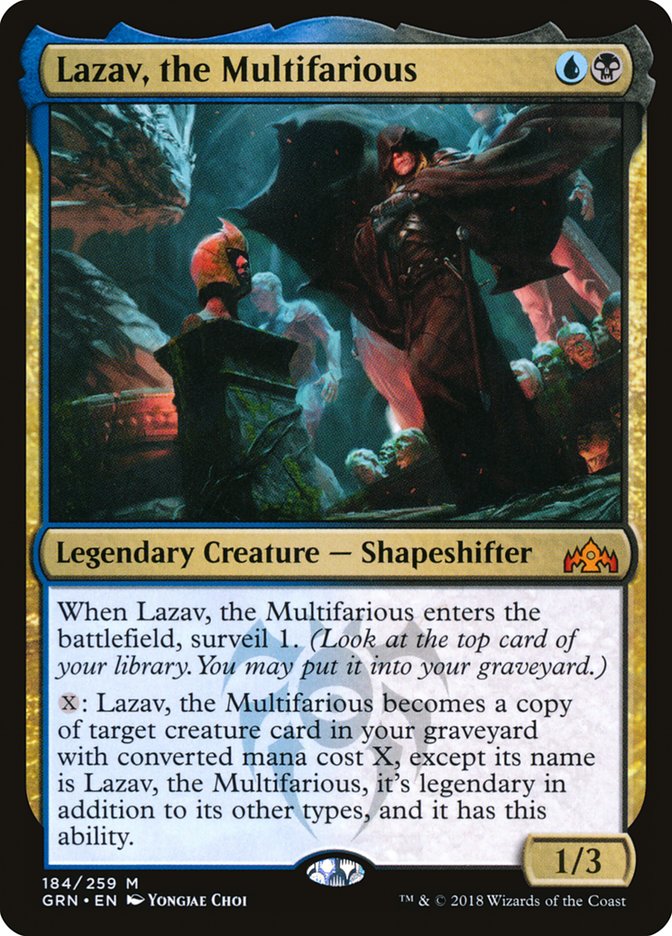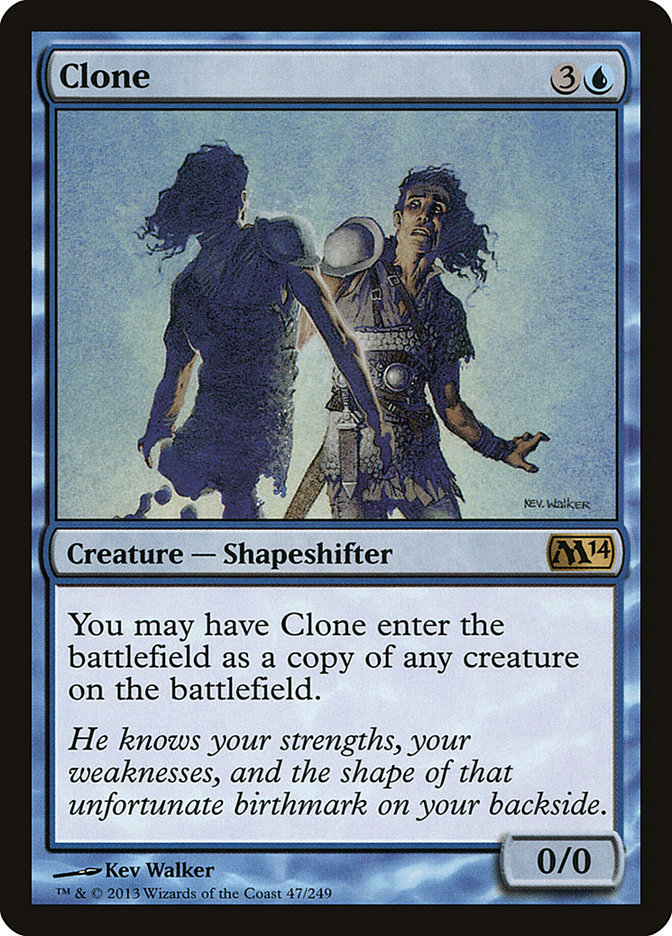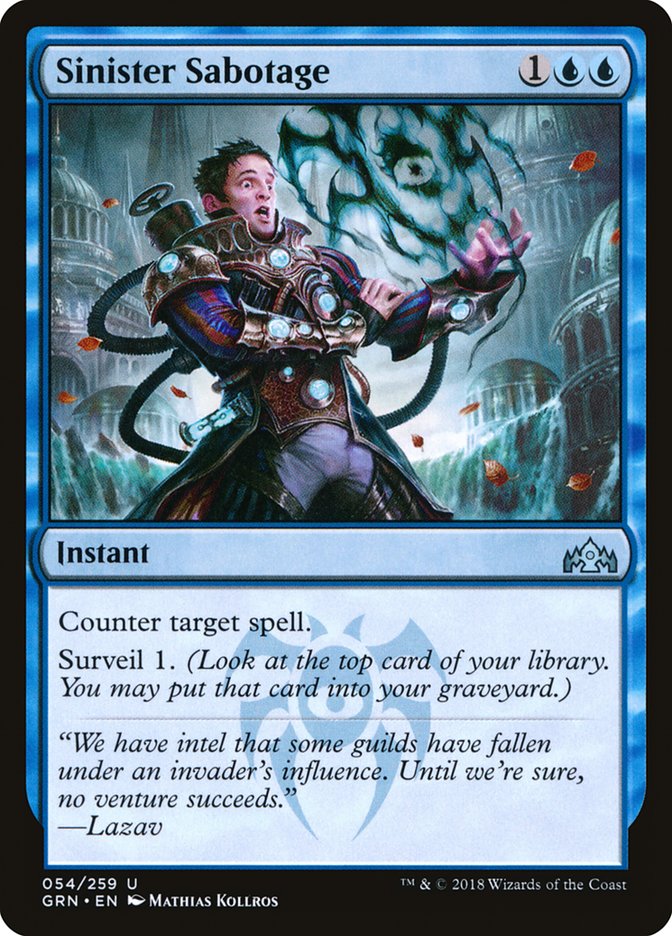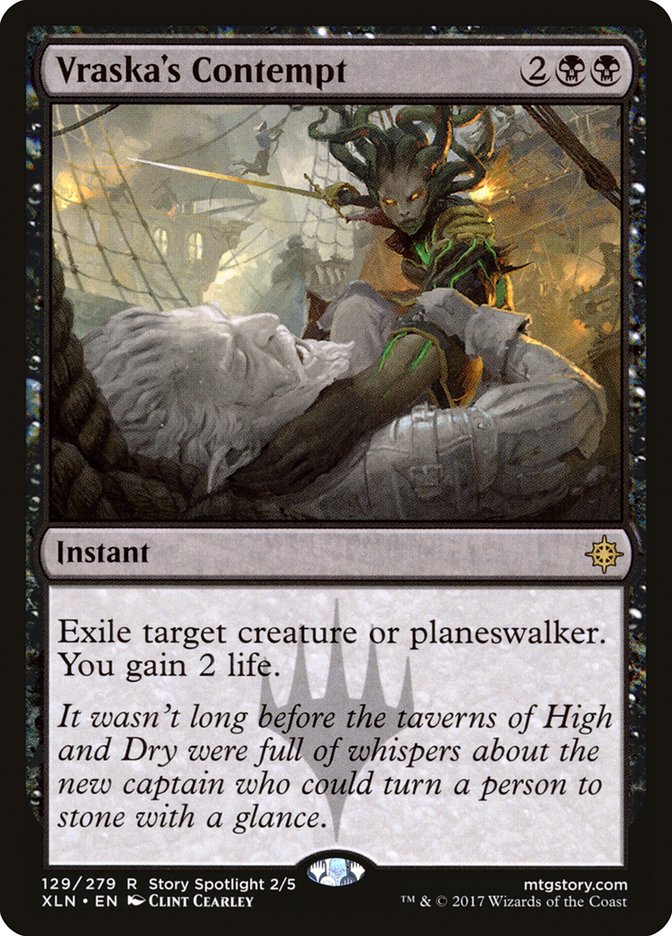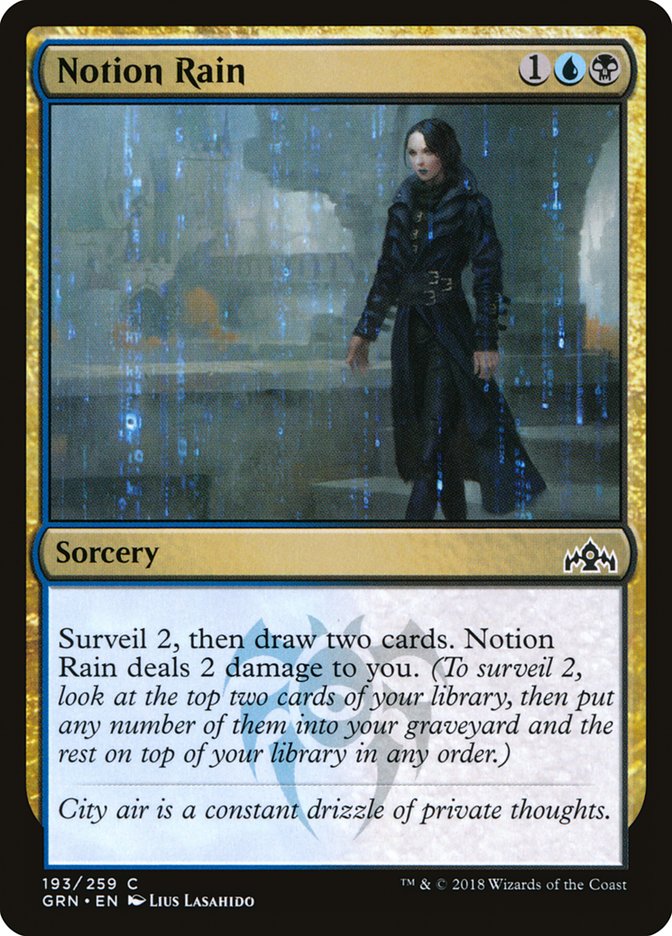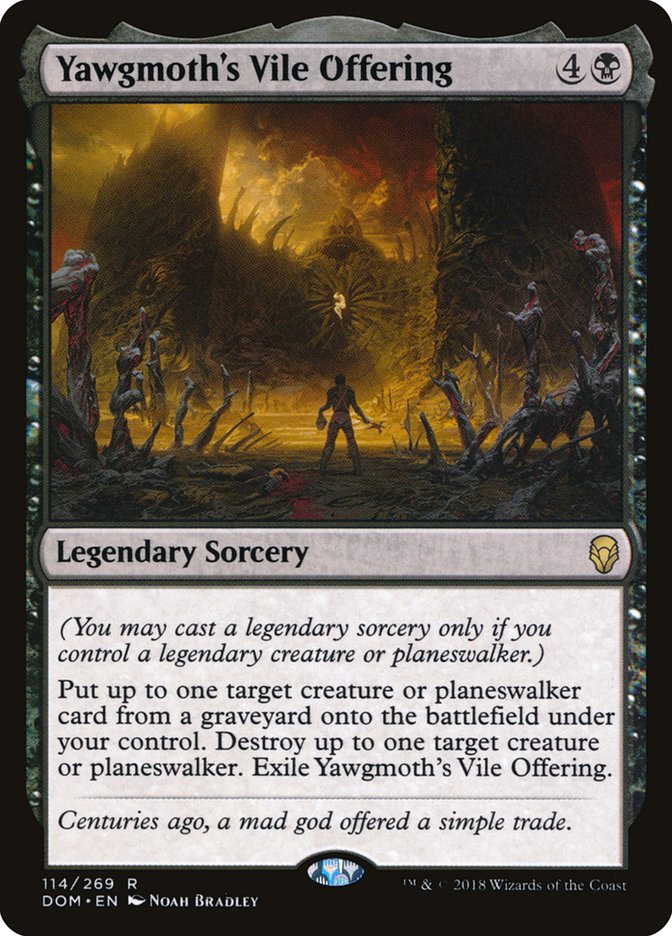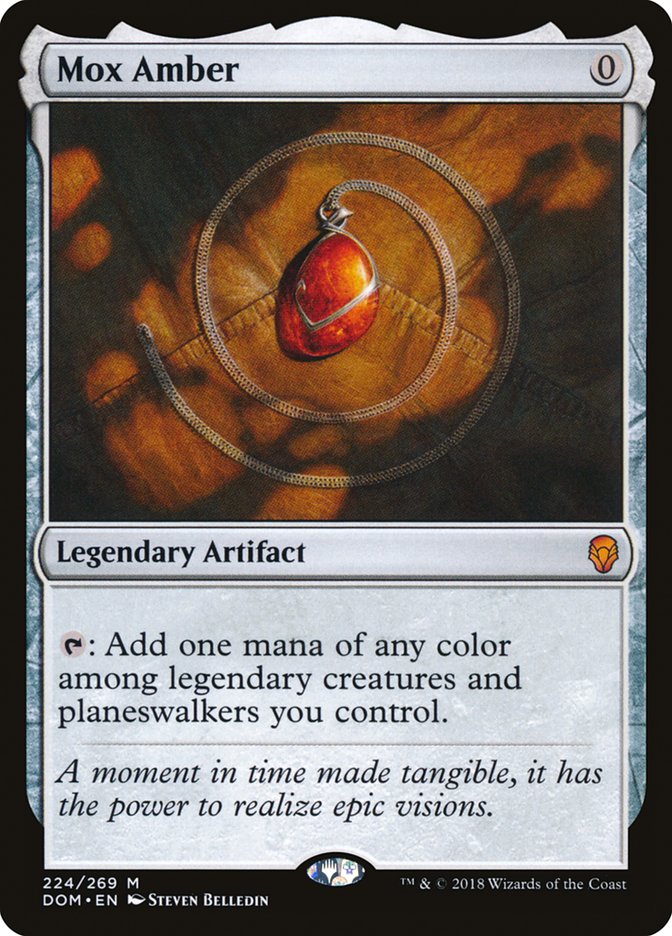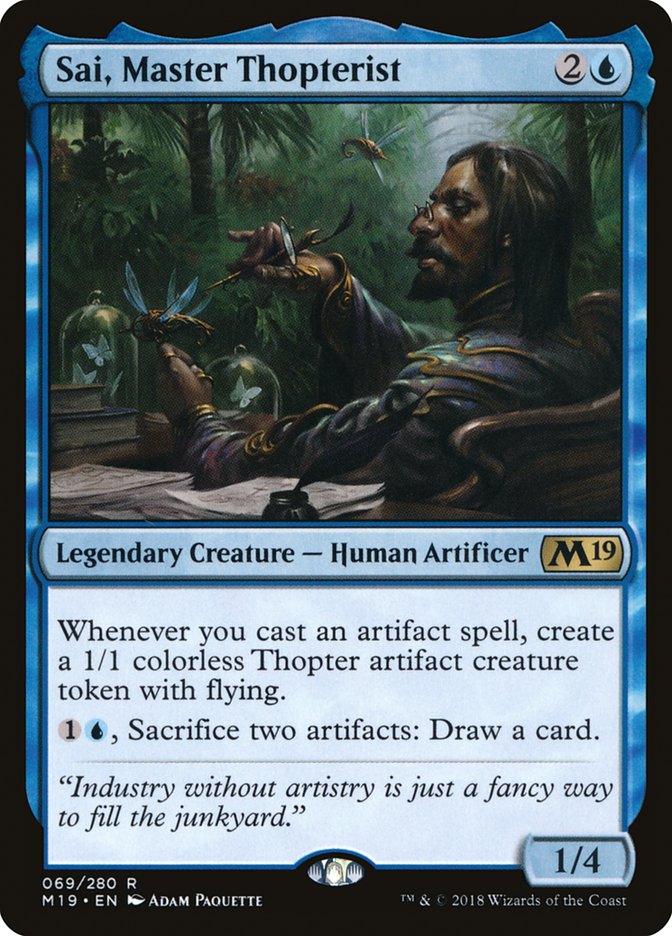Hear me out.
I think Lazav, the Multifarious has what it takes to make it in Guilds of Ravnica Standard. Maybe that’s a hot take, maybe it’s
not; all the chatter I’ve seen surrounding Lazav has been people excited to
play Lazav in Commander, not Standard. This makes sense, as legendary
creatures and abilities that cost X both scream Commander, but Lazav will
be more than a Commander card.
You look at Lazav and the first thing you think is “neat, a new take on
Clone.” The second thing you think is “wait, I have to pay the card’s
entire converted mana cost to become a copy?” Then there isn’t really a
third thought, because you’ve already lost all interest in the card and
moved on to other exciting previews.
And you’re right to do so. Or rather, you’re doing so as the result of
lessons that have been taught time and time again as new sets come out. If
a card requires the presence of another card to do much of anything and
even then requires you to pay the full amount of mana, you’re generally
better off just playing more copies of the cards that do things by
themselves. This is a hard-won maxim, and one that pays you off for
listening most of the time. But I’m here to tell you that Lazav merits an
exception.
Not Your Typical Clone
Lazav, the Multifarious is nothing like any Clone effect you’ve seen
before. All the Clone heuristics we’ve developed over time are useless when
attempting to evaluate Lazav. That’s why it doesn’t matter that you end up
spending full retail to become a copy, a bargain which has historically
proven to be not so good. We must throw history out the window and look at
Lazav for what they are, not what we think they are.
Let’s start with the bad stuff. Clones are rarely Constructed-playable, and
when they are it’s because they’re working an abuse case, typically enters
the battlefield effects. Take the Modern Humans deck for example.
Phantasmal Image is heralded as one of the most important cards in the
deck, and a large part of the reason why is the ability to double-down on
key enters the battlefield triggers. Phantasmal Images extreme fragility
doesn’t matter because the copy doesn’t need to stick around very long for
its work to be done.
The fact that Lazav, the Multifarious can’t copy an enters the battlefield
effect is a huge strike against them. One of the huge Clone pay-offs thrown
right out the window. Lazav will have to look elsewhere for power.
One place to not look is the classic Clone ability to guarantee having at
least one copy of the best creature on the battlefield. That was always the
cool fallback plan of Clones: no matter how far behind you are, casting a
Clone will be a good step towards getting back to parity. But Lazav can
never copy what your opponent’s doing, and so this guarantee is out. Worse,
Lazav can’t even let you double-up on what you’re doing, as they only copy
things from the graveyard. Like I said, Lazav barely counts as a Clone at
all.
So that’s the bad side of Lazav. We’re not going to be abusing enters the
battlefield triggers, we have no guarantee of being the best creature on
the battlefield, and we’re never going to get to do any of the cool things
that our opponent brought to the table. But that’s okay, as Lazav’s
departure from typical Clone design brings plenty of good along with the
bad.
For starters, let’s consider the fact that Lazav’s inability to deliver on
the Clone guarantee of being the best creature on the battlefield means
that sometimes Lazav will be the best creature around, not just
tied for it. This is something that classic Clones can only manage in
combination with a removal spell, but it’s something that Lazav can manage
with ease. This means that Lazav is more singularly threatening than we’re
used to Clones being.
Another noteworthy plus on Lazav is that the shapeshifting ability isn’t
binding. This means that when playing with Lazav, you will never be
confronted with the frustration of committing your clone to something a
turn before the creature you actually want to clone pops up. This avoids
feel-bad moments and gives you more freedom with your Lazav, but it also
gives you more flexibility. Lazav can shift back and forth between two or
more forms as the need arises, which is an added level of power late in the
game that other clones don’t have access to.
Finally, let’s consider this fact: you don’t need to wait for there to be a
creature you want to copy to deploy Lazav. Classical clones must rot in
your hand until there’s something on the battlefield worth copying, Lazav,
The Multifarious can come down Turn 2 on a completely empty battlefield.
How much does that change?
Everything.
Getting in The Door with Lazav
Forget about that X ability for a second. Forget all about the cool
shapeshifting Lazav is capable of and evaluate the rest of the card. If
Lazav, the Multifarious were a two-mana 1/3 with surveil 1 when they enter
the battlefield, how would you feel about them?
Lukewarm at best, right? There’s nothing particularly exciting about this
alternate reality Lazav, but nether is there anything particularly
offensive about them. A two-mana 1/3 is a completely reasonable stat line
for a defensive creature and surveil 1 is a pretty reasonable bonus to tack
on. Actually, this version of Lazav is very reminiscent of a creature that
has seen play in past Standard formats:
Now, Omenspeaker was never a Standard powerhouse, but the card did see
non-zero amounts of play at various points in time. Scry 2 is better than
surveil 1, but not so much better that the comparison between Lazav and
Omenspeaker falls apart. Point is, there’s precedent for a two mana 1/3
with a minor library manipulation effect being a playable card in Standard.
Lazav is that and more.
We talk about floors and ceilings a lot in Magic. You want a card to have a
high ceiling, to be able to do unbelievably powerful things and win games
all on its own. Lazav has that, with an X ability that lets them be just as
powerful as the most powerful threat in your deck. You also want cards to
have a high floor, to still function at a reasonable level even in less
than ideal circumstances, and Lazav also has that. Even at their worst,
Lazav is still an Omenspeaker.
This high floor is a ramification of Lazav’s ability to be deployed on an
empty battlefield where other clones must sit and wait. It’s a huge deal,
and it’s why we should be willing to forgive Lazav for all their
shortcomings when compared to other clones. Clones abuse enters the
battlefield triggers because they must to make up for their other
limitations, limitations Lazav doesn’t share.
Maybe you think I’m getting way too hyped over an Omenspeaker. If Lazav
were actually just an Omenspeaker variant, I would agree with you. But it’s
time to put the rest of Lazav’s text back where it belongs in the textbox.
Lazav isn’t just an Omenspeaker: they’re an Omenspeaker that your opponent
must answer or they will lose the game.
That’s the real difference maker and the thing that has me so excited about
Lazav. Omenspeaker is a reasonable defensive card but nothing more. In
matchups where you have no need to gum-up the ground, Omenspeaker isn’t
worth very much. In any matchup, an Omenspeaker drawn late does virtually
nothing. Lazav doesn’t have these problems. Lazav is just as good at
blocking and playing defense, but much better at being a relevant
card in the lategame. That’s very appealing.
Notable Play Patterns and Interactions
So, we think we want to play with Lazav, the Multifarious. We have some
good reasons for why the card should be powerful, but none of those reasons
matter if it doesn’t play well. “Playing well” is far from precise
terminology, but what it boils down to is no amount of theoretical power
matters at all if the play patterns Lazav creates are awkward or if the
interactions Lazav has with the other cards in the format are decidedly
unfavorable. The easiest way to figure this out is to play games, but
that’s not really an option yet, so we’ll have to make-do with some
analysis.
We’ll start with play patterns, and there’s good news there: Lazav isn’t
really asking us for very much. The fact that Lazav’s X ability can be
activated at instant speed is huge. If there was a sorcery speed
restriction on this ability, I’d be much less excited about Lazav. You’d
always be risking large amounts of mana at predictable times and would have
very little ability to play around your opponent’s removal. Fortunately,
that’s not the case.
As a two-mana creature, Lazav plays fairly well against countermagic. Lazav
enters the battlefield before countermagic shields can be reliably raised,
and then the real fun begins. With Lazav on the battlefield, any creature
your countermagic-wielding opponent counters becomes an additional option
available to your Lazav. Even better, it becomes an option you have access
to at instant speed that can no longer be countered. In many ways, Lazav is
a control player’s worst nightmare: a cheap threat that slips under
countermagic and matters a lot. See: Glint-Sleeve Siphoner.
Lazav does similar work against removal that doesn’t exile, giving you the
ability to double-down on an important threat in the face of removal. I’d
be very excited about this if not for one thing: It’s too early yet to feel
like we have a good idea of the shape of the removal in Guilds of Ravnica Standard.
So far, it looks like Vraska’s Contempt is going to remain a big player in
the removal of the format. This weakens the power of Lazav more than you
might think. Sure, Contempt is only one removal spell, but it’s the removal
spell played with the intention of getting rid of your biggest threat. Your
biggest threat is exactly what you want to be in your graveyard
for Lazav the most. Lazav will be weaker if the format is ruled by removal
that exiles. Keep an eye out for how the removal shapes up, but don’t rule
Lazav out just because of the removal.
Lazav does one other cool thing we haven’t touched on yet that introduces
an excellent wrinkle into the associated play patterns: using Lazav’s X
ability is essentially giving the creature you’re targeting flash and
haste. Lazav has been on the battlefield the whole time, so if you use
Lazav’s ability to become a huge creature during your main phase you can
immediately attack. Similarly, the fact that you can use Lazav’s ability
during your opponent’s end step means you’re threatening to turn Lazav into
a huge threat at very inconvenient times, potentially forcing your opponent
to leave mana up or perish. This is big.
Let’s move on to some of the interactions Lazav, the Multifarious has with
the Standard format at large:
Surveil plays excellently with Lazav. That’s probably not a huge
surprise, given that Lazav surveils when they enter they battlefield, but
we should take a moment to truly appreciate the depth of the interaction.
If you surveil while you have a Lazav on the battlefield and see one of
your important creatures, you can put that creature into your graveyard and
still have access to it. This is effectively the same as drawing a card, as
you have increased the cards you have access to by one.
Even better, as we discussed previously, this creature you put into the
graveyard and now have access to thanks to Lazav is actually better than it would be in your hand. In the graveyard it
effectively has flash and haste, keywords it probably wouldn’t have in your
hand. Lazav’s ability to turn surveil into draw and improve creatures in
the process is very powerful and shouldn’t be underestimated.
Notion Rain, in particular, is a card I’m very excited to play alongside
Lazav. The ability to look at two cards to potentially bin for Lazav is
great, and Notion Rain becomes a sizable upgrade on Read the Bones when
played alongside Lazav. Read the Bones was already great, so a better Read
the Bones is very appealing. The fact that Lazav into Notion Rain
represents an excellent Turn 2 intoTurn 3 curve is not lost on me, and I
look forward to starting many games of Guilds of Ravnica Standard
in exactly that way.
It’s also worth noting that Lazav is a legendary creature, and never loses
that legendary status, no matter what form they happen to be in. This means
that Lazav can be used to enable powerful Dominaria cards like
Yawgmoth’s Vile Offering and Mox Amber. Yawgmoth’s Vile Offering is the
possibility here that interests me the most, with the graveyard synergies
that Lazav loves doing double duty in supporting the Vile Offering.
Before moving on to where I would start with a Lazav deck, I wouldn’t be
doing my due diligence if I didn’t mention the fact that Lazav always keeps
their name. This means that Lazav can copy a legendary creature in your
graveyard and still be named Lazav. This doesn’t much matter,
unless you happen to also control a real copy of that legendary as well.
Since they have different names, the legendary rule won’t force you to send
one to the graveyard. Lazav is a way to circumvent the legend rule and have
two copies of the same legendary creature on the battlefield. This is a
neat quirk that doesn’t matter until it matters, but there’s definitely
legends where having “multiple” copies on the battlefield at once can be
back-breaking for your opponent.
Building with Lazav
Alright, maybe I’ve convinced you that Lazav, the Multifarious is worth
looking into, maybe I haven’t. Hopefully I have, as now it’s time to start
taking a look at how to build a deck with Lazav. The first question is
pretty obvious: What creatures are we looking to copy?
There’s a few different directions you can take this question. Maybe you’re
interested in a combo-esque Lazav deck and are interested in Lazav’s
ability to provide redundancy for your synergies. You’ll be looking for
creatures that work well together and ways to turbo-charge your graveyard
and turn your Lazav into Demonic Tutor. Or maybe you’re interested in the
flexibility that Lazav represents and want to play a bunch of one-ofs
alongside that same graveyard turbo-charging, making sure your Lazav always
can be the perfect creature for the given situation.
Myself, I believe Lazav rewards you for just playing Magic. Sure,
there’s things you can do that make Lazav shine, but Lazav doesn’t have to
be the cornerstone of your deck to be good. The big selling point of Lazav
to me is that they’re an Omenspeaker that demands an
answer, and I don’t want to think that and then play a deck where I hope my
opponent never answers my Lazav. I’m interested in creatures that play well
with Lazav, but that also play well without them.
Regardless of what kind of Lazav deck you’re trying to build, some things
are clear:
-
You’re not interested in creatures with enters the battlefield
triggers. Lazav can’t copy the trigger, so too much of the power of
these creatures is wasted. -
Static effects are ideal. Creatures like Ruin Raider and Twilight
Prophet are very appealing and powerful to copy. -
Hexproof is a uniquely powerful keyword to have access to, giving
your Lazav a way to beat removal in the lategame. -
Creatures that work to fill your graveyard are an added bonus. I’m
looking at you, Doom Whisperer. -
Lazav is sneaky and plays well with on-hit triggers. Lazav can
become the creature with the on-hit trigger after no blocks are
declared while potentially being a very scary creature to block
before that time.
Creatures (16)
Lands (26)
Spells (18)

It’s too early for me to have a sideboard, although I can say that
Disdainful Stroke is very likely to make the cut.
This is where I would start with Lazav, the Multifarious. Nothing fancy,
just a simple midrange deck for a simple girl. On paper, this deck looks
like it might have some trouble closing out games before the plethora of
life loss effects it plays catches up with it. I believe Lazav will do a
great deal to make the deck close faster than it looks like it should.
Another potential criticism of this build is that it’s very prone to
flooding. That’s absolutely true, and is another thing done with Lazav in
mind. This build has many small choices made with Lazav in mind, and
playing with it should really highlight the power of Lazav. The list is
clearly a first draft and unrefined, but it’s a good test of Lazav’s
abilities nonetheless. Afterall, we don’t even know all the cards from Guilds of Ravnica yet!
There’s a lot you can do with Lazav, and this build only scratches the
surface. I’m super excited for Guilds of Ravnica Standard and the
chance to see Lazav in action, and so much more.


